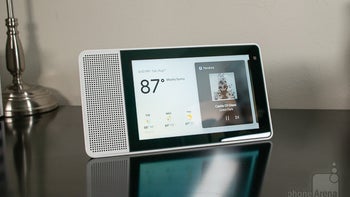Google's very own smart display is probably coming this fall

We’re less than two months away from Google’s apparent Pixel 3 announcement date, but details remain slim regarding other products the search giant might look to unveil in early October.
History suggests the company’s first notch-embracing phone will definitely not fly solo to San Francisco, as the Pixel 2 and 2 XL, for instance, were joined by Google Home Mini and Home Max smart speakers, as well as the Google Clips wireless smart camera, Chrome OS-powered Pixelbook laptop, and a refreshed Daydream View VR headset last year.
This time around, a largely mysterious Pixel Watch is expected to kick off an Android WearWear OS resurgence, while an even more cryptic “smart display” could go for the Amazon Echo Show’s jugular.
After assisting a few hardware-making partners in releasing smart speakers with touchscreens, Google is reportedly planning to take the matter into its own hands. Of course, a similar report as the one issued today by the Nikkei Asian Review made the rounds way back in April, although a couple of inside details seem to lend this new rumor a little bit of credence.
Unnamed “industry sources” claim Google is “aggressively” targeting to ship “some 3 million units for the first batch of the new model of smart speaker that comes with a screen.” That’s quite a lot considering one research firm estimated Amazon barely sold 315,000 Echo Show copies last year after a commercial debut in late June.
Numerous recent reports have declared Google the fastest riser of the flourishing smart speaker market, with a Q2 2018 share boosted from 16 percent the year before to a solid 27.6 percent.
A “standard” Google Home is typically sold for $129, while a large and premium Home Max fetches $399. The Echo Show carries a $230 recommended price tag, and although today’s report doesn’t tackle numbers, we’re guessing Google’s Assistant-controlled smart display will squeeze somewhere between the Home and Home Max.
Unfortunately, we don’t know exactly when sales are supposed to begin, but you should probably expect to see this thing in stores before the holidays.
History suggests the company’s first notch-embracing phone will definitely not fly solo to San Francisco, as the Pixel 2 and 2 XL, for instance, were joined by Google Home Mini and Home Max smart speakers, as well as the Google Clips wireless smart camera, Chrome OS-powered Pixelbook laptop, and a refreshed Daydream View VR headset last year.
This time around, a largely mysterious Pixel Watch is expected to kick off an Android WearWear OS resurgence, while an even more cryptic “smart display” could go for the Amazon Echo Show’s jugular.
After assisting a few hardware-making partners in releasing smart speakers with touchscreens, Google is reportedly planning to take the matter into its own hands. Of course, a similar report as the one issued today by the Nikkei Asian Review made the rounds way back in April, although a couple of inside details seem to lend this new rumor a little bit of credence.
Unnamed “industry sources” claim Google is “aggressively” targeting to ship “some 3 million units for the first batch of the new model of smart speaker that comes with a screen.” That’s quite a lot considering one research firm estimated Amazon barely sold 315,000 Echo Show copies last year after a commercial debut in late June.
Numerous recent reports have declared Google the fastest riser of the flourishing smart speaker market, with a Q2 2018 share boosted from 16 percent the year before to a solid 27.6 percent.
A “standard” Google Home is typically sold for $129, while a large and premium Home Max fetches $399. The Echo Show carries a $230 recommended price tag, and although today’s report doesn’t tackle numbers, we’re guessing Google’s Assistant-controlled smart display will squeeze somewhere between the Home and Home Max.
Unfortunately, we don’t know exactly when sales are supposed to begin, but you should probably expect to see this thing in stores before the holidays.
source: Nikkei Asian Review










Things that are NOT allowed: